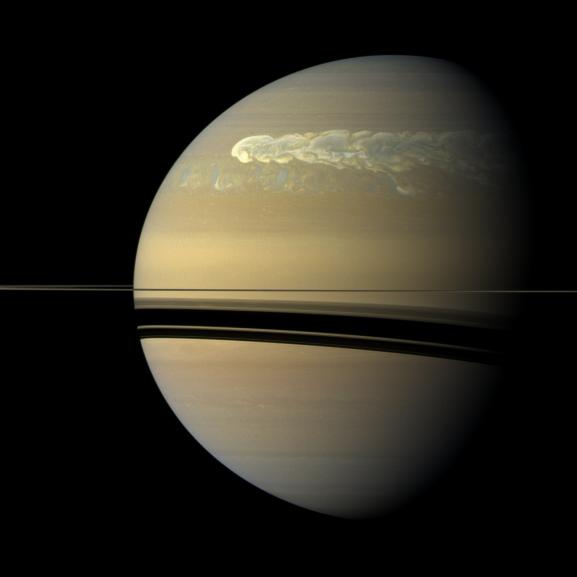Cassini captures gigantic hurricane on Saturn in exquisite detail
Ars Technica » Scientific Method 2013-06-24
Jupiter's Great Red Spot may get most of the attention, but it's hardly the only big weather event in the Solar System. Saturn, for example, has an odd hexagonal pattern in the clouds at its north pole, and when the planet tilted enough to illuminate it, the light revealed a giant hurricane embedded in the center of the hexagon. Scientists think the immense storm may have been there for years.
But Saturn is also home to transient storms that show up sporadically. The most notable of these are the Great White Spots, which can persist for months and alter the weather on a planetary scale. Great White Spots are rare, with only six having been observed since 1876. When one formed in 2010, we were lucky enough to have the Cassini orbiter in place to watch it from close up. Even though the head of the storm was roughly 7,000 km across, Cassini's cameras were able to image it at resolutions where each pixel was only 14 km across, allowing an unprecedented view into the storm's dynamics.
The storm turned out to be very violent, with convective features as big as 3,000 km across that could form and dissipate in as little as 10 hours. Winds of over 400 km/hour were detected, and the pressure gradient between the storm and the unaffected areas nearby was twice that of the one observed in the Great Red Spot of Jupiter. By carefully mapping the direction of the winds, the authors were able to conclude that the head of the White Spot was an anti-cyclone, with winds orbiting around a central feature.
Read 4 remaining paragraphs | Comments
